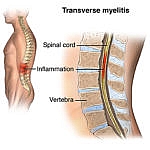There is no cure for this type of hypersomnia, but you can find the right narcolepsy treatment. Here’s a narcoleptic definition, plus narcolepsy symptoms and therapies.
Knowing the definition and symptoms of narcolepsy is important because the list of possible misdiagnoses is staggering! “Narcoleptics and doctors alike may believe narcolepsy is a stroke, multiple sclerosis, panic attacks, schizophrenia, or a thyroid condition,” writes Dr Carlos Schenck in Sleep: A Groundbreaking Guide to the Mysteries, the Problems, and the Solutions. “Narcolepsy is uncommon enough that much of the general medical community doesn’t understand it, yet common enough that they should.” Several studies show that it can take years to be diagnosed correctly with narcolepsy, which is why getting the right narcoleptic definition is crucial.
Narcoleptic Definition
Narcolepsy is a medical condition in which the barriers between sleep and wakefulness become blurred, and it’s often misdiagnosed. I thought narcolepsy was as sleep disorder, but it’s actually a hypersomnia. A hypersomnia is a disorder in which sufferers have frequent, excessive daytime sleepiness that isn’t because of a lack of sleep or interrupted sleep at night. Depression is a major cause of hypersomnia – people who are clinically depressed sleep too little or too much, which leads to excessive daytime sleepiness.
Here’s a great definition of what narcolepsy is, from Sleep:
You’re sleepy most of the time, even though you sleep at least seven or eight hours a night. You sometimes have a strong urge to fall asleep while standing up, or while shopping, or at a stoplight while driving. The urge to sleep is irresistible much of the time, and you often have to pull over to the side of the road or find somewhere to nap. You may feel like you’re lazy, and people who don’t understand a narcoleptic definition may tell you to quit letting yourself sleep all the time. They think you should drink more coffee or get more sleep…and you’re not sure whether to believe them. Feeling sleepy almost all the time is a symptom of narcolepsy.
A more medical narcoleptic definition, from the MayoClinic:
Narcolepsy is a chronic disorder of the central nervous system characterized by the brain’s inability to control sleep-wake cycles. It causes sudden bouts of sleep and is often accompanied by cataplexy, an abrupt loss of voluntary muscle tone that can cause a person to collapse. According to the National Institutes of Health, narcolepsy is thought to affect roughly one in every 3,000 Americans.
If you fall asleep all the time but you know it’s because of sleep deprivation, read How to Recover From Sleep Debt. Narcoleptics don’t have sleep debt; they get enough sleep.
Narcolepsy Symptoms
The following four characteristics of narcolepsy will further explain the definition of what a narcoleptic is.
1. Excessive daytime sleepiness
This can be a misleading narcolepsy symptom because most of us experience excessive daytime sleepiness from time to time! The difference is that a narcoleptic has trouble staying away even in active environments. After a nap, a narcoleptic will be alert for an hour or more, but drowsiness comes back. Another piece of this narcoleptic definition is their experience of microsleeps (moments of sleep in which narcoleptics don’t even know they took a brief nap).
How do you determine the difference between excessive daytime sleepiness caused by narcolepsy and excessive daytime sleepiness caused by occasional sleepless nights? A multiple sleep latency test. Narcoleptics fall asleep quickly when given opportunities to nap, and it’s not related to not getting enough sleep at night. Nor is a narcoleptic’s excessive daytime sleepiness caused by depression or another medical condition.
2. Cataplexy
The second characteristic of a narcoleptic definition involves the sudden loss of muscle tone while you’re awake – triggered by strong emotion. Cataplexy or a cataplectic attack could be triggered by fright, laughter, anger, shock, sadness, sex, dancing, running, etc. Not every narcoplectic experiences cataplexy, but it is a strong indication or symptom of narcolepsy.
During a cataplectic attack, a narcoleptic may experience feelings of weakness, sagging facial muscles, a drooping head, and even slurred speech. An even more telling narcolepsy symptom is severe cataplexy, in which a narcoleptic suddenly drops to the floor, possibly injuring himself or others nearby. A cataplectic attack might be mistaken for a seizure, which can further complicate a diagnosis of narcolepsy.
3. Hypnagogic and hypnopompic hallucinations
The third narcolepsy symptom involves the “sleep architecture” of narcoleptics because they occur as a result of moving very rapidly into rapid eye movement (REM) sleep. Hypnagogic hallucinations occur when a narcoleptic has a very sudden sleep onset dream. That is, the narcoleptic will start dreaming within minutes of falling asleep – during the transition from wakefulness to sleep. Hypnopompic hallucinations, on the other hand, occur when the narcoleptic is starting to wake up. This type of hallucination isn’t solely a narcoleptic definition, because it can happen with people suffering from sleep deprivation.
4. Sleep paralysis
The final symptom of a narcoleptic definition is sleep paralysis, which occurs in the transition from sleep to wakefulness or wakefulness to sleep. It’s when the brain is awake, but the body isn’t. “Sleep paralysis may be accompanied by hallucinations, as well, or just a vague sense of doom and panic,” writes Dr Schenck in Sleep: A Groundbreaking Guide to the Mysteries, the Problems, and the Solutions. “Often sufferers describe feeling as if an evil presence is sitting on their chests, suffocating them. The paralysis may be total, or it may involve just the arms, just the legs, or just certain other body parts.” A narcoleptic experiencing sleep paralysis might try to call out for help, but can’t make a noise (like some nightmares I’ve had!). Other narcoleptics describe an out-of-body experience or the feeling of levitation.
Most narcoleptics experience the first two narcolepsy symptoms (experience excessive daytime sleepiness and cataplexy), but only 10 to 25% experience the last two symptoms (hypnagogic and hypnopompic hallucinations, and sleep paralysis).
Narcolepsy Treatment
While there is currently no cure for narcolepsy, there are several treatments. Narcolepsy therapies may require more than one medication, and several options are available.
Modafinil (Provigil)
This medication is approved for treatment of narcoleptic excessive daytime sleepiness, and is the first non-amphetamine, non-methylphenidate stimulant medication proven to help narcoleptics stay awake. Modafinil carries a lower risk of side effects and abuse than amphetamines, and is a more user-friendly medication for narcolepsy. If the narcoleptic definition above describes you, then you might talk to your doctor about Modafinil.
Stimulants
Narcoleptics have long been prescribed Ritalin (methylphenidate, which Modafinil does not contain), dextroamphetamine, and amphetamine salts to stay awake. Higher doses of stimulants can be harmful and bring troublesome side effects, such as appetite suppression, mood and mental changes, and increased blood pressure. Further, narcoleptics may develop a tolerance to stimulants such as Ritalin, dextroamphetamine, and amphetamine salts.
Antidepressants to treat narcolepsy
“To control cataplexy, three times of antidepressants may be used on account of their chemical profile,” writes Dr Schenck in Sleep: A Groundbreaking Guide to the Mysteries, the Problems, and the Solutions. “Selective serotonin reuptake inhibitors (SSRIs), particularly fluozetine (Prozac); venlafaxine (Effexor); and tricyclic antidepressants (clomipramine, imipramine).” He adds that all three antidepressants have been proven to decrease cataplexy episodes, with mild side effects and low risk of tolerance.
Using antidepressants to as a narcolepsy treatment doesn’t mean the narcoleptic has clinical depression. It’s the chemical properties in the medications that work for this type of hypersomnia.
If you think you have narcolepsy, it’s important to learn as much as you can about it. Dr Schenck’s book is incredibly informative and easy to understand, but it’s about sleep in general.
Wide Awake and Dreaming: A Memoir of Narcolepsy by Julie Flygare is a fascinating personal account of what it’s like to be a narcoleptic. She faced terrifying hallucinations, sleep paralysis and excruciating daytime sleepiness. She also experienced dream sleep while she was wide awake. Reading this book will help you understand the narcoleptic definition better because it’ll give you insight to how it really feels to have narcolepsy symptoms, and find different ways to treat this type of hypersomnia.
If you have any questions about this narcoleptic definition, narcolepsy symptoms, or therapies, please ask below! I can’t promise to have any answers about narcolepsy, but I’m a good researcher. I also welcome your experiences with narcolepsy or being a narcoleptic.
Sources: 1) Sleep: A Groundbreaking Guide to the Mysteries, the Problems, and the Solutions by Dr Carlos Schenck; and 2) Narcolepsy Symptoms Causes Treatments from the MayoClinic.com.







1 comments On Narcolepsy Symptoms and Treatments
Pingback: Narcoleptic Definition – Narcolepsy Symptoms And Treatments | Anxiety & Panic Attack Helps ()